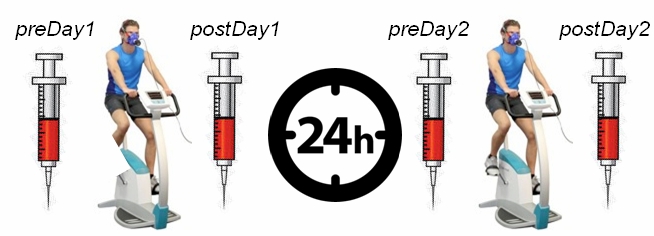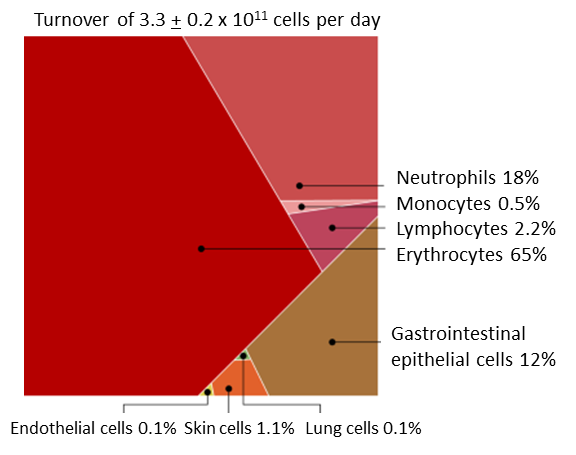Cell-free RNA in Plasma
We will examine the cell-free RNA (cfRNA) molecules present in the circulation at all 4 time points when blood was collected in the first phase of our NIH Center (2017-2023). Plasma samples from 173 subjects who underwent the two-day exercise test have been banked for use.

91 ME/CFS patients and 82 age and gender-matched sedentary controls performed two successive CPETs, separated by 24 hours. Blood samples taken at four different time points, baseline (preDay1), 15 minutes post CPET1 (postDay1), after a 24 hour recovery period (preDay2), and 15 minutes post CPET2 (postDay2).
CfRNA is released from both solid tissues and immune cells as a result of cell death. One way to access the proportion of cell types that are turning over is to determine the source of cfRNA. The cellular source of cfRNA in each subject can be identified by comparing to the known levels of differential gene expression in different cell types. Our premise is that identification of the cell types of origin of cfRNA in ME/CFS patients and controls before and after exercise may give us clues to the disruptions that happen after ME/CFS individuals elevate their activity levels. In particular, learning which cell types have altered patterns of injury and cell death in ME/CFS may reveal immune and tissue involvement in the pathophysiology of Post-Exertional Malaise (PEM).
Dr. Iwijn De Vlaminck’s group in the Meinig School of Biomedical Engineering will be responsible for cell-free RNA analysis.
 Center for Enervating NeuroImmune Disease
Center for Enervating NeuroImmune Disease
